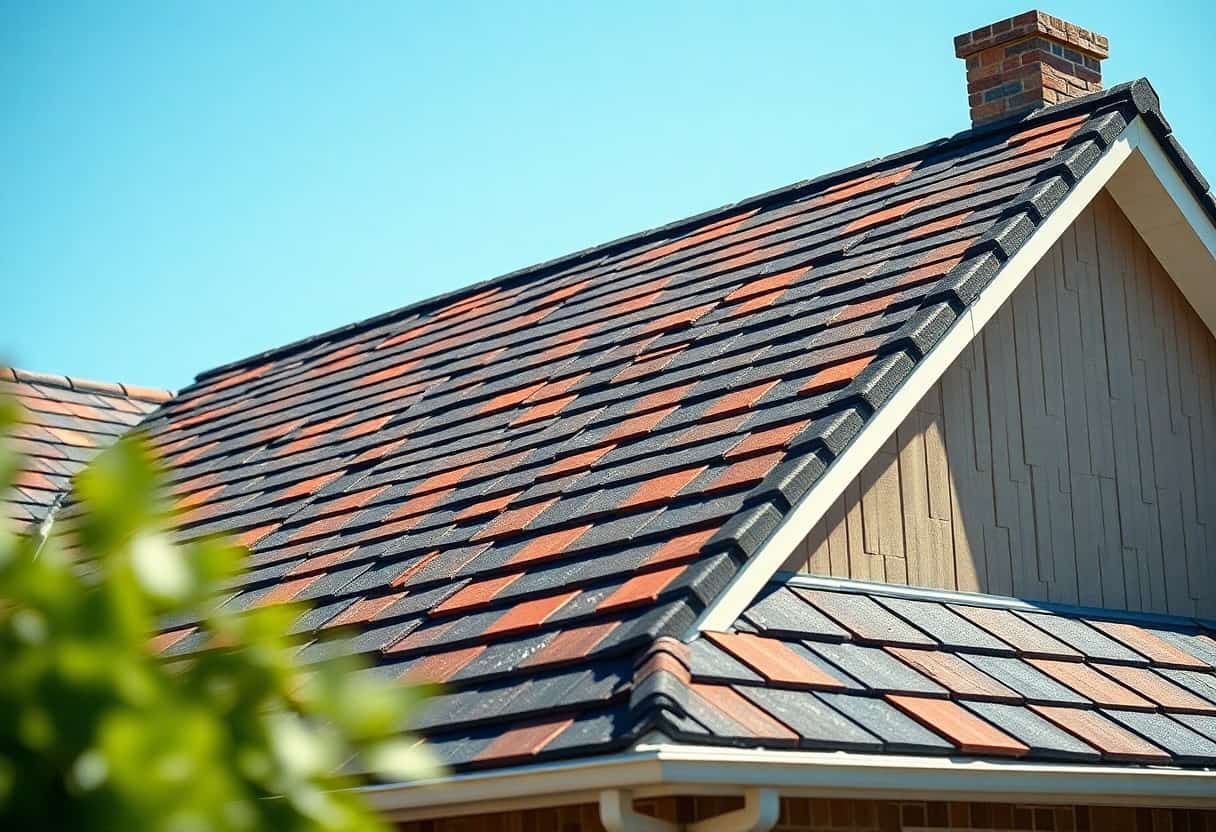How long will my new roof last?
Fill Out The Form And We'll Get Back To You

Roof longevity is an important consideration when investing in your home. Understanding the factors that influence the lifespan of your new roof can help you make informed decisions. Various roofing materials, the quality of installation, and local weather conditions all play a significant role. This guide will provide you with valuable insights into what you can expect from your new roof, ensuring you are well prepared for the years ahead.
Factors Affecting Roof Longevity
A variety of factors can significantly influence the lifespan of your new roof. Understanding these factors can help you make informed choices and maintain your roof effectively. Consider the following:
- Material quality
- Installation method
- Maintenance practices
- Climate and weather conditions
- Roof design and slope
Thou must take each of these into account when assessing the durability of your roofing system.
Material Types
Below is a breakdown of common roofing materials and their average lifespans:
| Material | Average Lifespan |
|---|---|
| Asphalt shingles | 15-30 years |
| Wood shakes | 20-40 years |
| Metal roofing | 40-70 years |
| Slate | 75-200 years |
| Tile | 50-100 years |
Recognising the right material for your needs can profoundly impact your roof’s longevity.
Climate Considerations
Material selection is vital in regions with extreme weather conditions. The effectiveness of your roofing system can diminish in harsh environments.
Longevity can be significantly affected by factors such as temperature changes, humidity, and frequent storms. In areas with heavy snowfall, for example, you may need a sloped roof to prevent ice buildup. Similarly, if you live in an area prone to extreme heat, materials that withstand UV exposure are crucial. By considering your local climate, you can select a roofing option that can endure the specific challenges posed by your environment, ensuring your investment lasts longer.
Common Roofing Materials and Their Lifespans
There’s a variety of roofing materials available, each offering different lifespans and benefits. Understanding these options is vital when selecting a roofing system that suits your needs and budget. Asphalt shingles, metal roofing, and slate or tile are among the most common materials, each with its own characteristics, durability, and aesthetic appeal.
Asphalt Shingles
Around 20 to 30 years is the typical lifespan of asphalt shingles, making them a popular choice for many homeowners. Their affordability and ease of installation contribute to their widespread use, though they may require more frequent replacement compared to some other materials.
Metal Roofing
Roofing made from metal can last 40 to 70 years, depending on the type of metal used and local weather conditions. Choosing metal roofing not only enhances your home’s durability but also increases its energy efficiency due to its reflective properties.
In fact, metal roofing offers low maintenance and resistance to severe weather, which makes it an attractive option for homeowners in areas prone to heavy rainfall or snow. Its longevity and durability can offset the higher initial investment, providing great value over time.
Slate and Tile
Along with their stunning visual appeal, slate and tile roofs are known for their impressive lifespans of 50 years or more. These materials are incredibly resilient and can withstand harsh weather conditions, providing a sophisticated touch to your home.
Roofing crafted from slate or tile may require professional installation, but they often pay for themselves through their longevity and minimal maintenance needs. Investing in quality slate or tile roofing can significantly enhance your home’s aesthetic appeal while ensuring maximum protection over the years.
Maintenance and Its Impact on Roof Life
Your roof’s longevity is significantly influenced by routine maintenance and care. Regular inspections and timely repairs can help detect issues early, ultimately extending the life of your roof. For more information about what is the average lifespan of a roof? Is it necessary …, consider how proactive you can be in protecting this valuable asset.
Routine Inspections
About every season, you should carry out visual inspections of your roof. Checking for signs of wear, such as missing shingles or water damage, helps ensure any potential issues are identified before they become major repairs.
Repairs and Upkeep
Impactful maintenance activities, such as cleaning gutters and replacing damaged tiles, prevent further deterioration of your roof. Timely repairs can save you significant costs by avoiding larger problems in the future.
Repairs play a vital role in maintaining the structural integrity of your roof. Addressing minor issues promptly can prevent water leakage and further damage, thus prolonging your roof’s lifespan. By investing in repairs and upkeep, you safeguard your home and ensure that your roofing system performs effectively for many years to come.
Signs of Roof Aging
For many homeowners, recognising the signs of roof aging is important to ensure your property remains protected. Over time, various factors such as weather exposure, tree debris, and UV rays can accelerate deterioration. Being aware of these signs helps you take action before extensive damage occurs, ensuring the longevity of your roof and safeguarding your home’s structural integrity.
Visual Indicators
Indicators of roof aging can often be spotted from the ground. Look out for curling, missing, or cracked shingles, as well as discolouration and algae growth. These visual signs can suggest that your roof is nearing the end of its lifespan and may require repair or replacement to maintain its effectiveness.
Performance Issues
Above all, performance issues can significantly impact the functionality of your roof. Pay attention to signs such as leaks, poor insulation, and increased energy bills, as these may highlight that your roof is no longer performing as it should.
Further to visual indicators, performance issues reveal deeper problems that could be affecting your home. If you notice increased drafts or water stains on your ceilings, this could indicate compromised roofing materials or flashing. Regular inspections can help catch these performance-related issues early, allowing you to address them before they escalate into more expensive repairs or a complete roof replacement.
Warranty and Manufacturer Guidelines
Once again, it’s necessary to consider the warranty and manufacturer guidelines when assessing the lifespan of your new roof. Manufacturers often provide specific warranties that outline the expected durability and coverage in the event of defects. These warranties can vary significantly depending on the materials used and the brand, so it’s vital to carefully review these documents to understand your rights and obligations, ensuring you maximise the investment in your home.
Understanding Warranty Terms
Beside the quality of materials, understanding the warranty terms will play a significant role in determining your roof’s longevity. When choosing roofing materials, you should carefully examine what’s covered by the warranty, as well as any conditions that might void it. A comprehensive warranty can offer peace of mind, but it’s necessary to know the specifics.
Importance of Installation Quality
Across the roofing industry, the quality of installation is a significant factor affecting your roof’s lifespan. Even the highest quality materials may underperform if not installed correctly, leading to premature failures and costly repairs. Therefore, selecting a skilled roofing professional is vital to ensure that your roof lasts as long as possible.
In fact, the installation process shapes the performance and longevity of your roof. Poor installation practices, such as inadequate sealing or improper layering, can expose your roof to leaks and damage much sooner than anticipated. Hence, investing in a reputable contractor who follows best practices and adheres to manufacturer guidelines will greatly enhance the durability of your new roof, allowing you to enjoy its benefits fully for many years to come.
Summing up
Now that you understand the various factors influencing the lifespan of your new roof, including materials, climate, and maintenance, you can better assess how long it will likely last. Generally, quality roofing can endure between 20 to 50 years, depending on the type chosen and care taken. By investing in high-quality materials and adhering to regular maintenance schedules, you can significantly extend your roof’s lifespan and protect your home for years to come.
FAQ
Q: How long can I expect my new roof to last?
A: The lifespan of a new roof can vary significantly depending on the materials used, the quality of installation, and environmental factors. Generally, asphalt shingles can last between 15 to 30 years, while metal roofs may last 40 to 70 years, and slate or tile roofs can endure for over 100 years. Proper maintenance can also extend the life of your roof, so regular inspections and care are advised.
Q: What factors influence the longevity of my new roof?
A: Several factors can influence how long your new roof will last. These include the type of roofing material chosen, the quality of installation, local weather conditions, roof pitch, and how well the roof is maintained. Areas with extreme weather conditions, such as heavy rain or snow, may lead to a reduced lifespan if not factored into the roofing decisions. Additionally, addressing any issues early, like damage or leaks, can prevent larger problems down the line.
Q: How can I prolong the lifespan of my new roof?
A: To maximise the lifespan of your new roof, consider regular maintenance such as cleaning gutters and downspouts, removing debris, and checking for any signs of damage or wear. It is also advisable to schedule professional roof inspections at least once a year, especially after severe weather. Keeping trees trimmed away from the roof can prevent unnecessary damage from falling branches or excessive shade, which could contribute to moss or mildew growth.
Re-Roof of Bungalow
The team made a fantastic job of replacing the roof on our bunglaow. They were fasy, reliable and excellent value for money.
Chimney Removal
We employed Wrights Roofs to take down our very old chimney – tht had seen better days. They carefully removed and made good the area where the chimney was. Really impressed.
New Roof
We had an extension built and Wrights came and put a new roof on. They were brilliant, no fuss, great value for money. Thank you.
Roofs, Flat Roofs Chimneys and Solar Panels
If you need roof work on your home, please complete the form or call us today.

